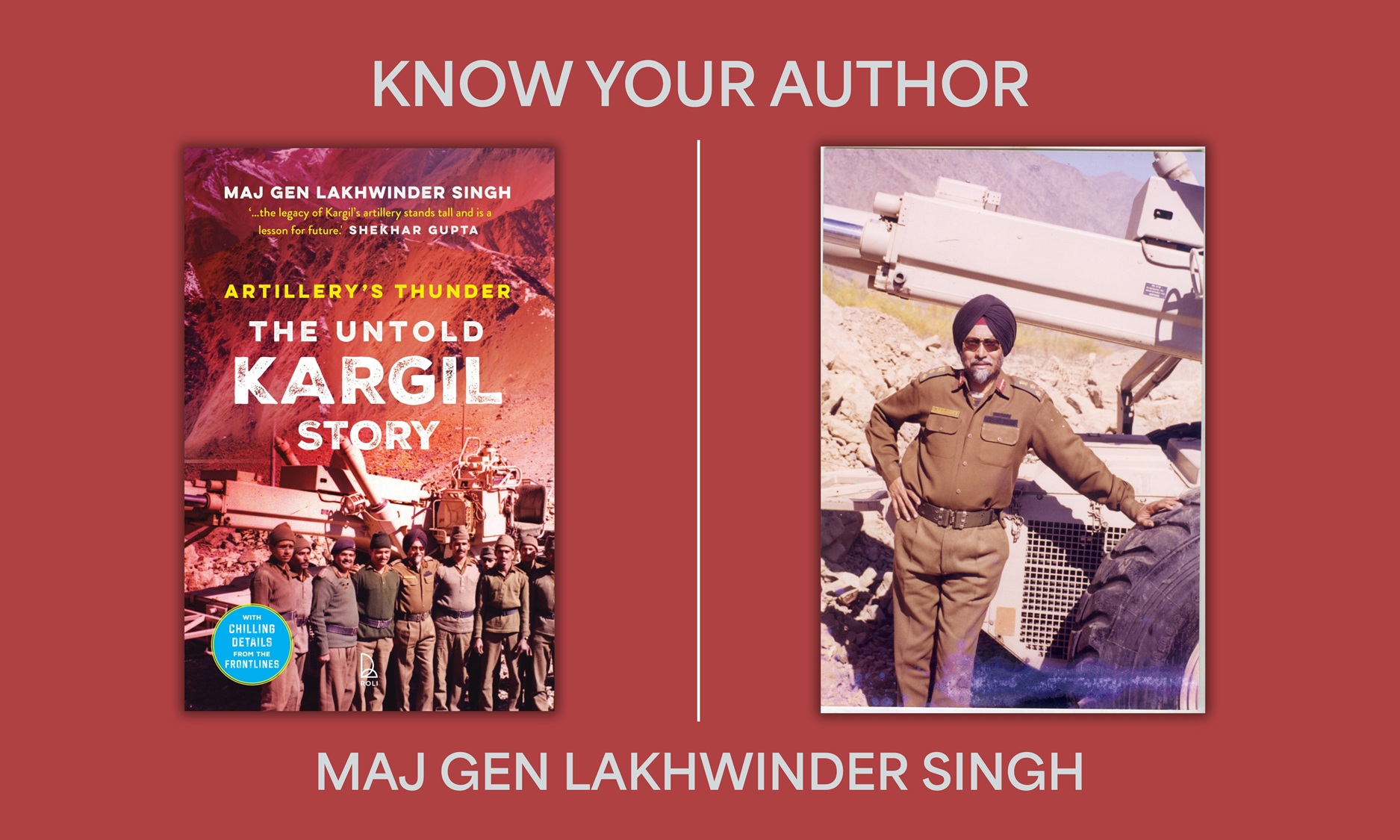Maj Gen Lakhwinder Singh is a third-generation army officer and joined the National Defence Academy in 1964. He was commissioned into the Regiment of Artillery in December 1967. With Artillery’s Thunder: The Untold Kargil Story, he offers a gripping account of how India’s mighty Bofors FH-77B howitzers turned the tide of Operation Vijay. A powerful blend of battlefield heroism and present-day urgency, this is a tribute to the men who fought at the world’s highest battlefield. Here is a candid interview we recently conducted with him.
1. What was the inspiration to write this book on Kargil after almost 25 years of the war?
I felt the need to put my perspective of the Kargil war as I see it two and a half decades past the event. My narration is straight from the heart and candid, without fear or bias. The experience gained during the 1971 Indo–Pak war fought in the Dera Baba Nanak Sector, in the Western Theatre, came handy to face the challenges ahead.
2. Was joining the Indian Army your first choice as a career and a way of life?
Yes indeed. In the days of yore in Punjab, being in the Army was considered the noblest of professions, and for me, being a third-generation Army Officer, was a way of life. I was genetically structured and attuned to be in the Armed Forces. There were no second thoughts for any alternative.
3. Do you believe in ‘once a fauji, always a fauji…’? How has life in the Armed Forces helped you evolve as a person and a family man?
Well said. Once a Fauji, always a Fauji. We take greatest of pride to be so distinguished. The way of life in Armed Forces imbibes in you to be a gentleman first and then an officer, that is why in the training establishment you are called Gentleman Cadets. The Armed Forces have made me an upright and honest citizen, to walk and behave in a manner which draws respect and envy of the people around. A lesser-known fact is that our way of life makes the whole family, your spouse and children an integral part of the Forces in substance and spirit.
4. What was the most difficult part of writing this book?
Picking up my courage to write the book as truthfully with no rancour.
5. How do you keep yourself busy post-retirement from the Army?
Post my superannuation, I have become an entrepreneur. I also enjoy playing golf and reading.
6. How do you think the Armed Forces and warfare has changed with technological advancement in this field?
That is a serious question. The warfare is ever changing and evolving process. Today’s leaders, along with other qualities, need to be technologically savvy, to fight both non-contact and contact warfare with equal elan.
7. What is the story behind calling you the ‘Enraged Bull of Dras’?
During the war, Pakistanis dreaded the onslaught of Artillery’s salvoes the most. They had no answer to the Artillery fire but of fear and despair. Every time we fired, the Pakis were heard calling for help on their radio sets, “Hamen Bachao, yeha per kehar baras raha hai”. It was said that wherever the Artillery set its eyes, the target was pulverised to annihilation – “Nashto Nabood kar diya”. That is how the phrase the ‘Enraged Bull of Dras’ was coined, the name ‘Bull’ being the call sign of the Artillery Brigade Commander on radio telephony.
8. What is the best writing advice you have received?
From my colleagues in war, who said, “Be honest and truthful to write the war account,” and from my editor, I learnt a lesson in patience and composure.
9. Which author or book (war book) has influenced you the most?
Many war books have left different impressions, but the one I continue to value most is the The Art of War by Sun Tzu, an ancient Chinese military strategist. His treatise is as meaningful today as it was 2,500 years ago.


